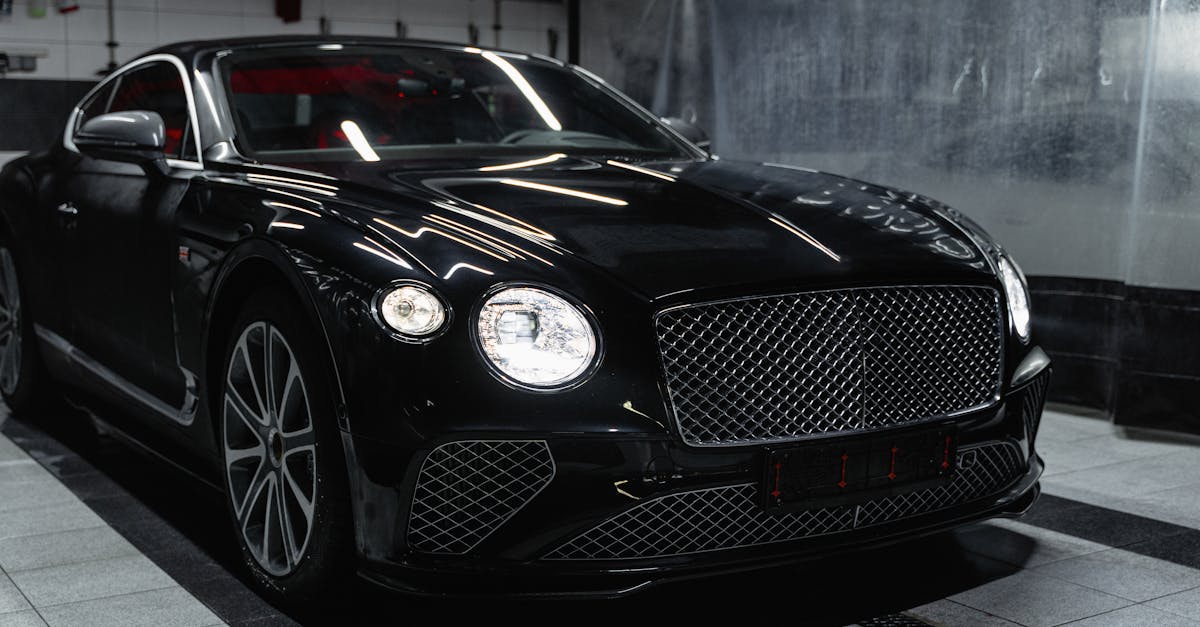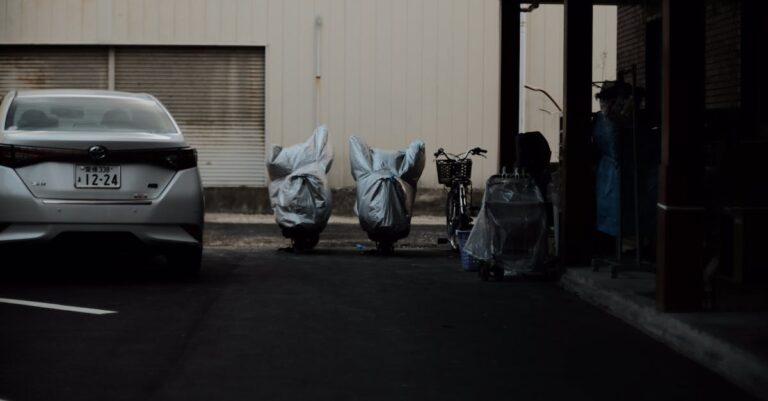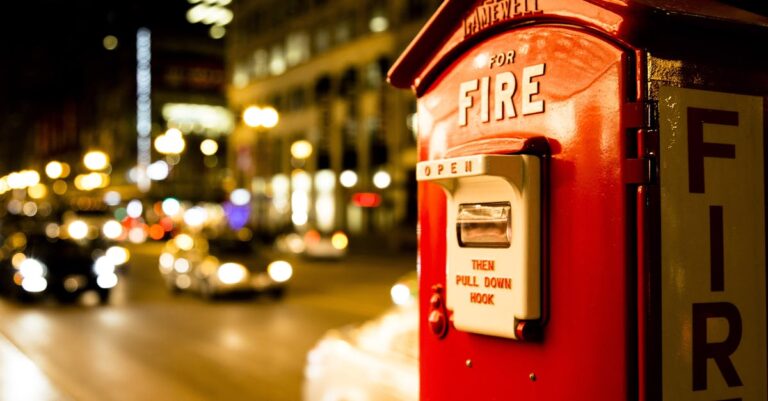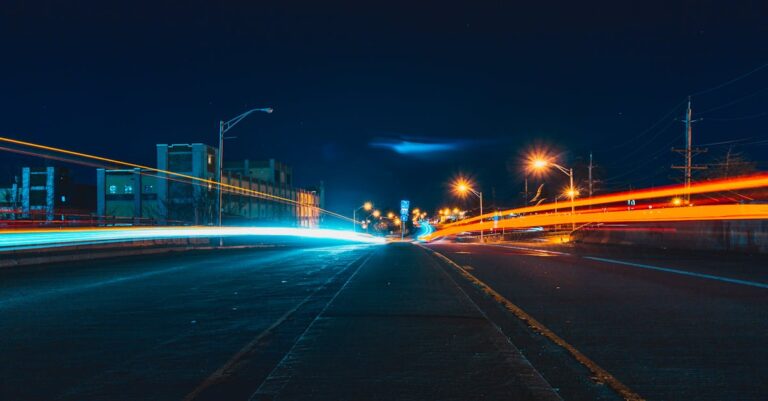Table of Contents
- Shine Bright: Your Ultimate Guide to Cleaning Car Headlights for Crystal Clear Clarity
- Why Do Car Headlights Get Foggy Anyway?
- The Dangers of Dim Headlights
- Assessing the Damage: How Bad Is It?
- DIY Headlight Cleaning Methods: Let’s Get Practical!
- Protecting Your Newly Cleaned Headlights
- When DIY Isn’t Enough: Professional Restoration
- Conclusion: See Clearly, Drive Safely
- Frequently Asked Questions (FAQs)
Shine Bright: Your Ultimate Guide to Cleaning Car Headlights for Crystal Clear Clarity
Ever feel like you’re squinting into the darkness, even with your headlights on full blast? Chances are, it’s not your eyes playing tricks on you. Your car’s headlights, those trusty beacons cutting through the night, might be suffering from a common affliction: haziness, fogging, or yellowing. It happens gradually, almost sneakily, until one day you realize your night vision on the road isn’t what it used to be. Don’t worry, you’re not alone! This is a super common issue, but the good news is, it’s often fixable right in your own driveway. Forget expensive replacements for a moment; let’s dive into the world of headlight cleaning and restoration. Ready to bring back that factory-fresh clarity and make night driving safer and brighter? Let’s get those lights shining!
Why Do Car Headlights Get Foggy Anyway?
So, what’s the deal? Why do those once-crystal-clear headlights start looking like they’ve seen better days, developing that cloudy, yellowed appearance? It’s not just dirt buildup, though that plays a part. The real culprits are a bit more scientific, but totally understandable.
The Culprit: UV Rays and Oxidation
Think of your headlights like your skin. Most modern headlights are made of polycarbonate plastic. It’s tough, impact-resistant, and great for safety, but it has an Achilles’ heel: the sun. Car manufacturers apply a protective clear coat to new headlights to shield them from harmful ultraviolet (UV) radiation. However, just like sunscreen wears off, this protective layer degrades over time due to constant sun exposure. Once that layer breaks down, the UV rays hit the polycarbonate directly, causing it to oxidize. This oxidation process is what leads to that dreaded yellowing and cloudiness, effectively creating a barrier that scatters and dims the light trying to pass through. It’s like putting a frosted shower door in front of your light bulb – the light’s still there, but it’s not getting out effectively.
Road Debris and Chemical Exposure
Beyond the relentless sun, your headlights are on the front lines, battling everything the road throws at them. Tiny bits of gravel, sand, and road salt kicked up by other vehicles act like miniature sandblasters, creating micro-abrasions on the headlight surface. These scratches further compromise the protective coating and give dirt and grime places to cling. Add harsh chemicals from road treatments, acid rain, car wash detergents, and even engine fumes, and you’ve got a cocktail that accelerates the degradation process. It’s a tough life being a headlight!
The Dangers of Dim Headlights
Okay, so foggy headlights look a bit shabby, but is it really that big of a deal? Absolutely! This isn’t just about aesthetics; it’s a serious safety concern that impacts you, your passengers, and everyone else sharing the road.
Reduced Visibility at Night
This is the most obvious danger. Oxidized, hazy headlights significantly reduce the amount of light projected onto the road. Think about it: the plastic itself is acting like a filter, blocking and scattering the light beam. Studies have shown that heavily clouded headlights can reduce light output by as much as 70-80%! That drastically shortens your sight distance at night or during poor weather conditions (like rain or fog). You might not see obstacles, pedestrians, animals, or sharp curves until it’s dangerously late, severely cutting down your reaction time. It’s like trying to navigate a dark room with sunglasses on – not ideal, right?
Compromised Safety for You and Others
Reduced visibility isn’t just about what you can see; it’s also about how well others can see you. Dim headlights make your vehicle less conspicuous to oncoming traffic and pedestrians, increasing the risk of collisions. Furthermore, the scattered light from foggy lenses can sometimes create glare for other drivers, even if the light output is low overall. Clear, focused beams are crucial for predictable and safe driving conditions for everyone involved.
Failing Inspections and Looking Bad
Depending on where you live, severely dimmed or obscured headlights can actually cause your vehicle to fail mandatory safety inspections. This could mean needing a potentially costly fix before you can legally drive your car. And let’s be honest, even if it’s not a safety inspection issue, cloudy, yellowed headlights just make an otherwise well-maintained car look old and neglected. Restoring them can instantly boost your car’s curb appeal!
Assessing the Damage: How Bad Is It?
Before you grab the nearest cleaning supplies, take a moment to really look at your headlights. How severe is the cloudiness or yellowing? Understanding the extent of the problem will help you choose the right cleaning method.
Light Haze vs. Heavy Yellowing
Is it just a light, filmy haze that slightly dulls the appearance, or are your headlights significantly yellowed and opaque?
- Light Haze: If the cloudiness is mild and the surface still feels relatively smooth, you might get away with a simpler cleaning method. This usually indicates the very early stages of oxidation or just surface contamination.
- Moderate Yellowing/Cloudiness: If there’s noticeable yellowing and the surface feels slightly rough or pitted, the oxidation is more advanced. The original protective coating is likely compromised. Simple cleaning might help temporarily, but a more abrasive method or a restoration kit will probably be needed for lasting results.
- Heavy Yellowing/Opacity: If the headlights are deeply yellowed, very cloudy (almost opaque), and feel rough to the touch, you’re dealing with significant oxidation. The original protective layer is long gone. You’ll definitely need a multi-step restoration process, likely involving sanding and polishing, to remove the damaged layers of plastic.
Also, check if the cloudiness is on the outside or inside of the lens. Most fogging occurs on the outside due to UV exposure and debris. If the moisture or haze seems to be *inside* the headlight unit, that indicates a broken seal, and cleaning the outside won’t fix it. A damaged seal often requires professional repair or replacement of the headlight assembly.
DIY Headlight Cleaning Methods: Let’s Get Practical!
Alright, you’ve assessed the situation, and you’re ready to roll up your sleeves. There are several popular DIY methods, ranging from household hacks to specialized kits. Let’s explore some common options.
Method 1: The Toothpaste Trick (Is it Worth It?)
You’ve probably seen this hack online. The idea is that the mild abrasives in toothpaste can polish away light haze. Does it work? Sometimes, for very mild cases, but don’t expect miracles.
What You’ll Need
- Regular white toothpaste (not gel, preferably one with baking soda or mild abrasives)
- A soft cloth or microfiber towel
- Another clean, damp cloth
- Water
- Painter’s tape (optional, to protect paintwork)
Step-by-Step Guide
- Clean the Headlight: Wash the headlight thoroughly with soap and water to remove loose dirt and grime. Dry it completely.
- Protect the Paint: (Optional) Apply painter’s tape around the headlight edge to avoid accidentally scrubbing your car’s paint.
- Apply Toothpaste: Squeeze a generous amount of toothpaste onto your soft cloth.
- Scrub: Rub the toothpaste onto the headlight lens using firm, circular motions. Apply consistent pressure. Spend a few minutes scrubbing the entire surface.
- Rinse: Rinse the headlight thoroughly with clean water, ensuring all toothpaste residue is removed.
- Dry and Inspect: Dry the headlight with a clean cloth and check the results. You might need to repeat the process for slightly better results.
Pros and Cons
Pros: Uses readily available household items, very cheap, easy to try.
Cons: Only effective on extremely light haze, results are often temporary, doesn’t provide UV protection, can be messy.
Verdict: Worth a shot if your headlights are barely cloudy, but manage your expectations. It’s more of a temporary polish than a true restoration.
Method 2: Baking Soda & Vinegar Power
Another common household remedy involves the gentle abrasive power of baking soda combined with the cleaning properties of vinegar. This creates a mild chemical reaction and scrubbing action.
Gathering Your Supplies
- Baking soda
- White vinegar
- A small bowl
- A soft cloth or sponge
- Water
- Clean cloths for rinsing and drying
- Painter’s tape (optional)
The Cleaning Process
- Clean and Prep: Wash and dry the headlights thoroughly. Apply painter’s tape if desired.
- Make the Paste: In the bowl, mix baking soda with a small amount of vinegar to form a paste. It will fizz initially – let it subside slightly. Aim for a consistency thick enough to stick to the lens but still spreadable.
- Apply and Scrub: Apply the paste to the headlight using a cloth or sponge. Scrub gently using circular motions. You might need to add a bit more vinegar to keep it moist as you work.
- Let it Sit (Optional): Some suggest letting the paste sit for a few minutes, but be cautious as prolonged exposure to vinegar isn’t ideal for plastic.
- Rinse Thoroughly: Wash off all the paste residue with plenty of clean water.
- Dry and Evaluate: Dry the headlight completely and assess the clarity.
Effectiveness Check
Similar to toothpaste, this method might offer some improvement on mild to moderate haze due to the gentle abrasion. However, it’s unlikely to tackle significant yellowing or deep oxidation effectively. It also lacks any form of UV protection, meaning any improvement will likely be short-lived.
Verdict: Slightly more potent than toothpaste for some, but still a temporary fix without addressing the root cause or providing protection.
Method 3: Dedicated Headlight Restoration Kits (The Prosumer Choice)
For more noticeable clouding and yellowing, investing in a dedicated headlight restoration kit is often the most effective DIY route. These kits are specifically designed for the job and usually contain everything you need for a multi-step process that cleans, restores, and protects.
What’s Usually in a Kit?
While brands vary, most kits include:
- Abrasive materials: This could be sandpaper sheets of varying grits (e.g., 1000, 2000, 3000 grit) or abrasive pads/discs.
- Polishing compound: A specialized compound to smooth the surface after sanding and restore clarity.
- Applicator pads/cloths: For applying compounds and protectants.
- UV Protective Sealant: A crucial final step! This liquid sealant acts like a new clear coat, protecting the restored lens from future UV damage and oxidation.
- Masking tape: Often included to protect surrounding paintwork.
Some kits are designed for hand application, while others include attachments for a power drill for faster results.
Following the Instructions: Sanding and Polishing
Using a kit typically involves these general steps (always follow the specific instructions provided with your chosen kit):
- Clean and Mask: Thoroughly clean the headlight and surrounding area. Carefully apply masking tape around the headlight edges to protect the paint.
- Wet Sanding (Multi-Stage): This is where you remove the oxidized layer. You’ll typically start with the coarsest grit sandpaper provided, keeping the surface wet (using water or a lubricant spray as directed). Sand evenly across the entire lens. Wipe clean and move to the next, finer grit sandpaper, sanding in the opposite direction. Repeat with progressively finer grits until you’ve used the finest one. The headlight will look very hazy or frosted at this stage – don’t panic! This is normal. The goal is to create a uniform, smooth surface free of yellowing.
- Polishing: Apply the polishing compound as directed (usually to a pad or cloth) and buff the headlight vigorously. This step removes the fine sanding marks and starts to bring back the clarity. Buff until the lens looks significantly clearer.
- Clean Again: Thoroughly clean the headlight one last time to remove all sanding debris and polishing compound residue. Ensure it’s completely dry.
Applying the Protective Sealant (Crucial Step!)
Do not skip this step! The sanding process removed the damaged plastic, but it also removed any remaining factory UV protection. The sealant is essential to prevent the headlight from quickly oxidizing again.
- Apply Sealant: Carefully apply the UV sealant according to the kit’s instructions. This is often a wipe-on liquid. Apply it evenly and smoothly, avoiding drips or runs.
- Curing: Allow the sealant to cure fully as directed. This might involve keeping the headlight dry and out of direct sunlight for a specific period (often several hours or even overnight).
Verdict: Restoration kits offer the most comprehensive and longest-lasting DIY solution. They require more effort than household hacks but address the root cause by removing oxidized plastic and applying new UV protection. Definitely the recommended approach for moderate to heavy clouding.
Protecting Your Newly Cleaned Headlights
You’ve put in the effort, and your headlights look fantastic! Now, how do you keep them that way? Protecting the restored surface is key to preventing that frustrating haze from returning prematurely.
Regular Washing
It sounds simple, but regularly washing your headlights as part of your normal car wash routine helps remove surface dirt, grime, and chemical contaminants before they have a chance to degrade the surface or the protective sealant. Use a proper car wash soap, not harsh household detergents, and a soft wash mitt.
Applying UV Protectant Sealants
Even if you used a restoration kit with a sealant, that sealant won’t last forever. Think of it like wax for your car’s paint. Applying a dedicated headlight UV protectant spray or wipe every few months (check the product recommendations, typically 3-6 months) adds an extra layer of defense against the sun’s damaging rays. These products are readily available at auto parts stores and are quick and easy to apply after washing.
Considering Protective Films
For the ultimate long-term protection, you might consider applying a clear protective film (sometimes called PPF – Paint Protection Film) specifically designed for headlights. These durable films act as a physical barrier against UV rays, scratches, small impacts from road debris, and chemical etching. They are professionally installed and offer years of protection, often being the best way to keep headlights looking brand new after restoration or on a new vehicle.
When DIY Isn’t Enough: Professional Restoration
While DIY methods, especially restoration kits, are effective for many situations, there are times when calling in the professionals is the best bet. Consider professional help if:
- The damage is extremely severe: Deep pitting, internal crazing (fine cracks), or extreme yellowing might be beyond the scope of DIY kits.
- You’re uncomfortable with sanding: If the idea of taking sandpaper to your headlights makes you nervous, a professional has the experience and tools to do it correctly.
- You want the best possible, longest-lasting results: Professionals often use higher-grade materials, more powerful tools (like machine polishers), and stronger, more durable sealants than typically found in consumer kits.
- You suspect internal damage: If there’s moisture or fogging *inside* the lens, a detailer or mechanic needs to assess if the unit seal is broken.
Professional restoration services are offered by many auto detailing shops and specialized headlight restoration businesses. While more expensive than DIY, it can still be significantly cheaper than replacing the entire headlight assembly, especially on modern cars with complex lighting systems.
Conclusion: See Clearly, Drive Safely
Foggy, yellowed headlights aren’t just an eyesore; they’re a genuine safety hazard that diminishes your ability to see and be seen on the road. Thankfully, restoring their clarity is often a manageable task. From simple household hacks for minor touch-ups to comprehensive restoration kits for more significant oxidation, there’s likely a DIY solution that fits your needs and budget. Remember, the key to lasting results lies not just in cleaning but also in protecting the lens afterwards with a quality UV sealant. Taking an hour or two to restore your headlights can dramatically improve your nighttime driving visibility, enhance your car’s appearance, and ultimately contribute to safer journeys for everyone. So, don’t squint through the haze any longer – give your headlights the attention they deserve and let them shine bright!
Frequently Asked Questions (FAQs)
FAQ 1: How often should I clean my headlights?
Answer: For general maintenance, wash your headlights whenever you wash your car to remove surface dirt. If you notice mild hazing returning after a restoration, a quick polish might be needed. Reapply a UV protectant sealant every 3-6 months (or as recommended by the product) to maintain clarity and protection.
FAQ 2: Can household cleaners damage my headlights?
Answer: Yes, potentially. Harsh chemicals like bleach, ammonia-based window cleaners, or aggressive solvents can damage the polycarbonate plastic or any remaining protective coating. Stick to car-specific soaps, designated headlight cleaners/restorers, or mild DIY solutions like toothpaste or baking soda paste (used cautiously).
FAQ 3: Does WD-40 really work for cleaning headlights?
Answer: Applying WD-40 can make headlights *look* clearer temporarily because the oil fills in microscopic scratches and creates a shinier surface. However, it does not remove oxidation and provides no UV protection. The effect is very short-lived, and it can attract more dust and potentially degrade the plastic over time. It’s not a recommended or effective long-term solution.
FAQ 4: Are headlight restoration kits difficult to use?
Answer: Most kits are designed for DIY use and come with detailed instructions. The process, especially involving sanding, requires some patience and elbow grease, but it’s generally straightforward. The key is to follow the steps carefully, particularly the sanding sequence (coarse to fine grit) and the crucial final sealant application. If you’re comfortable with basic DIY tasks, you can likely handle a restoration kit.
FAQ 5: What’s the best long-term solution for headlight clarity?
Answer: After a proper restoration (removing oxidation and polishing), the best long-term protection is applying a quality UV sealant regularly or investing in professionally installed clear protective film (PPF). PPF offers the most durable barrier against UV rays and physical damage, significantly extending the life of the headlight clarity.









